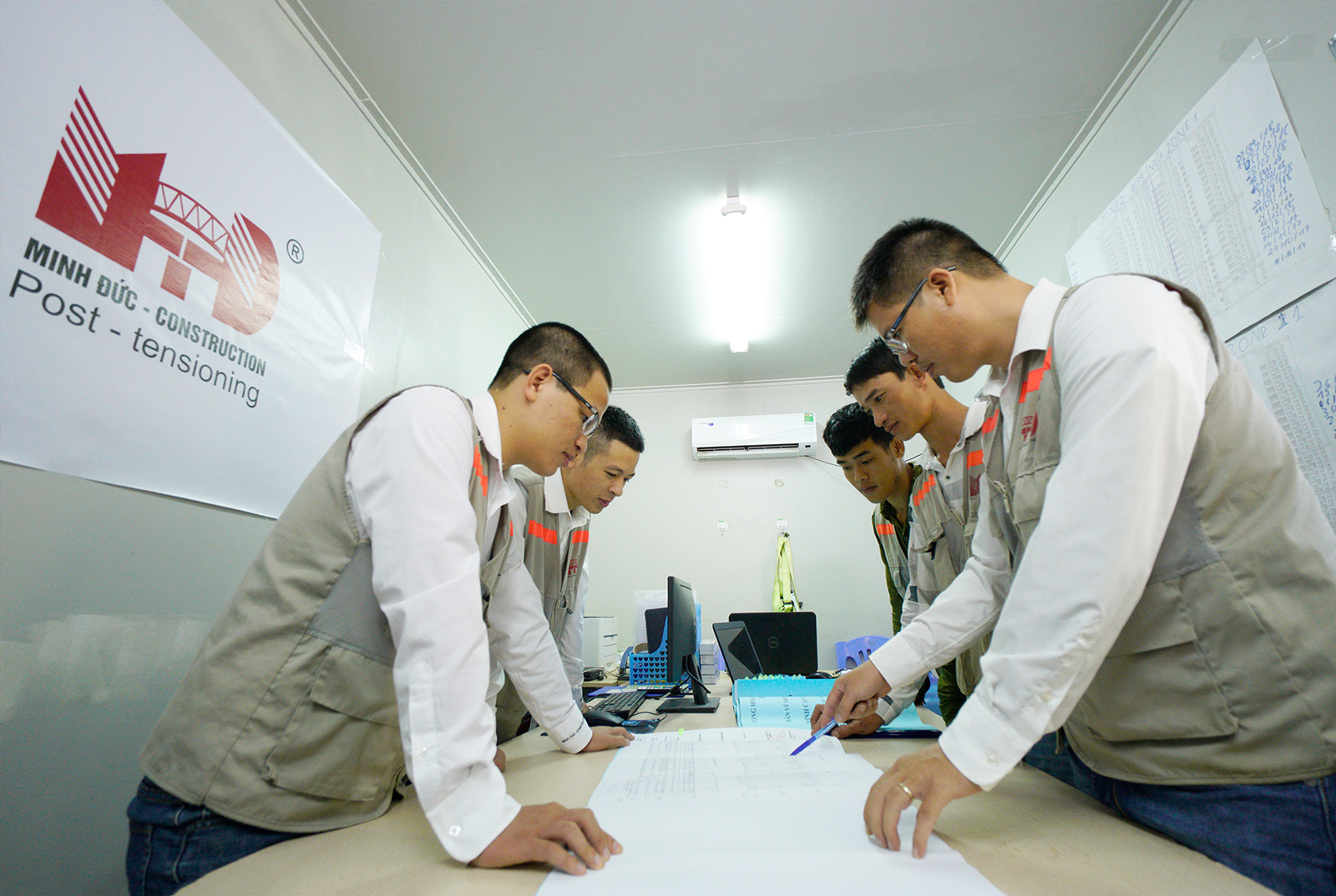CONSTRUCTION METHODS FOR MAIN CABLES: PPWS AND AS
At the international seminar “Suspension Cable Bridges – From Design to Construction,” Mr. P.V.T raised a question that drew widespread interest:
The advantages and disadvantages of the prefabricated main cable method (PPWS) and the in-situ cable threading method. Why is the prefabricated method more commonly used ?
This question opened the door to an in-depth discussion, as experts analyzed the strengths and weaknesses of the two main cable construction methods for suspension cable bridges.
I. Advantages and Disadvantages of the Two Main Cable Construction Methods for Suspension Cable Bridges
1. PPWS Method (Prefabricated Parallel Wire Strand)
Image source: Internet
Advantages:
- High construction efficiency: Most preparation work is carried out in the factory, reducing on-site construction time.
- Good quality control: In a factory environment, stress, tension, corrosion protection, and cable bundle geometry can be managed uniformly and accurately.
- Increased safety: Reduces high-altitude handling work, lowering the risk of accidents; avoids on-site welding or cutting of cables.
- Economic advantages in terms of total cost: Although transportation and supporting equipment costs are high, the shortened schedule, reduced need for skilled labor, and lower risk of unforeseen costs result in a lower overall expense.
- Scalable production capability: Highly suitable for projects with multiple or large cable bundles, leveraging production lines for standardization and unit cost optimization.
- Reduced temperature/day-night effects: Cable geometry adjustments are often performed under stable temperatures (typically at night) to minimize discrepancies caused by thermal effects.
Disadvantages:
- Transporting and handling bulky cable bundles require lifting equipment and suitable access routes.
- High on-site support systems are needed (bearing frames, rollers, guiding tables, and precise measurement systems).
- Limited flexibility in bending or rotating cable bundles on uneven terrain or steep slopes.
- When pulling large bundles, there is a risk of slippage or misalignment if equipment or procedures are not stable.
2. AS Method (On-Site Cable Spinning / 空中纺线法, AS Air Spinning)
Advantages:
- Flexible in adjusting the number of wires and making design changes on-site.
- Simple transportation: only small wire coils are needed, making it easy to navigate narrow paths or difficult terrain.
Image source: Internet
Disadvantages:
- Difficult to maintain uniform tension among the wires, which can easily cause geometric deviations.
- Extended construction time due to multiple passes, slowing down the schedule.
- High risk: extensive work at height, numerous joints, and susceptibility to errors under wind or bad weather.
- Cable compaction is hard to achieve uniformly, leading to significant variation across cable sections and affecting wire contact efficiency.
- For very large numbers of wires or long spans, the AS method becomes impractical in terms of schedule and quality control.
II. WHY PPWS IS MORE COMMONLY USED
- Nowadays, suspension bridges with long spans demand very high quality, making the superior control offered by PPWS a decisive advantage.
- Lower overall cost: reduced construction time, lower risk of unforeseen expenses, and decreased need for skilled labor and risk insurance.
- Better construction safety, meeting modern standards and minimizing hazardous operations.
- Supporting technologies (automatic pulling equipment, adjustment systems, intelligent anchoring) have advanced, making PPWS more feasible and efficient.
- For large-scale projects, the AS method becomes less effective due to extended time requirements and accumulated errors.
Conclusion
Both PPWS and AS methods have played important roles in the development history of suspension cable bridges. However, with increasing demands for precision, safety, and schedule, PPWS is demonstrating superior advantages and long-term suitability.
However, to determine the optimal method, multiple factors must be considered simultaneously. Only by thoroughly evaluating these criteria can the choice of construction method ensure overall feasibility, efficiency, and safety for the suspension cable bridge project.



